Five Historic Cemeteries to Visit in Boston
'Tis the season of grave peeping.
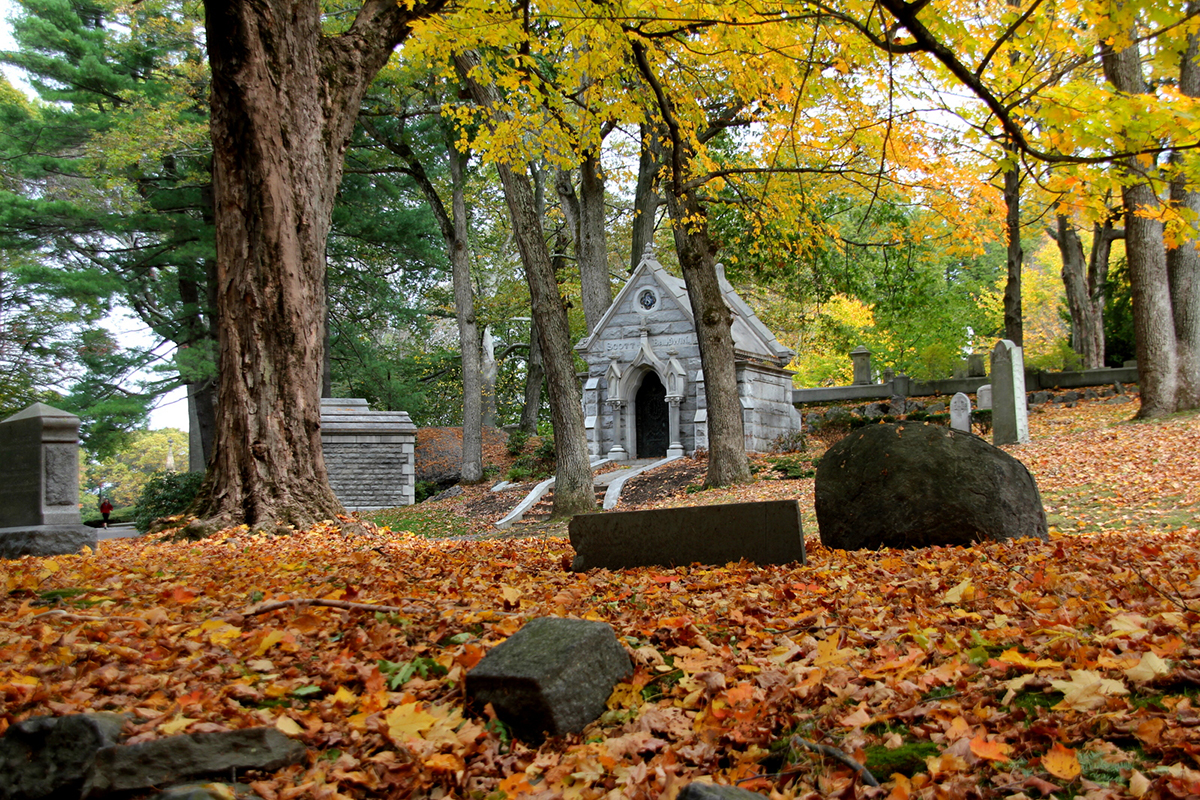
Photo by Bill Illot on Flickr/Creative Commons
Almost 300-year-old headstones are a dime a dozen in Boston. The city is home to plenty of Revolutionary War-era graves, too, and we’re the final resting place of figures like Paul Revere and John Hancock.
Before Bostonians thought to bury their dead in rural cemeteries, they placed them in their neighborhood burying grounds. As a result, several historic cemeteries remain smack dab in the middle of bustling downtown. They boast marble, granite, and slate slabs, some with rhyming epitaphs and others depicting skulls with wings. (Called “death’s head,” the common gravestone image is meant to represent a combination of physical death and spiritual regeneration.)
‘Tis the season for gravestone iconology analysis and leaf peeping. Here, find five historic cemeteries in Boston suitable for an autumn stroll.
Updated October 3, 2024.
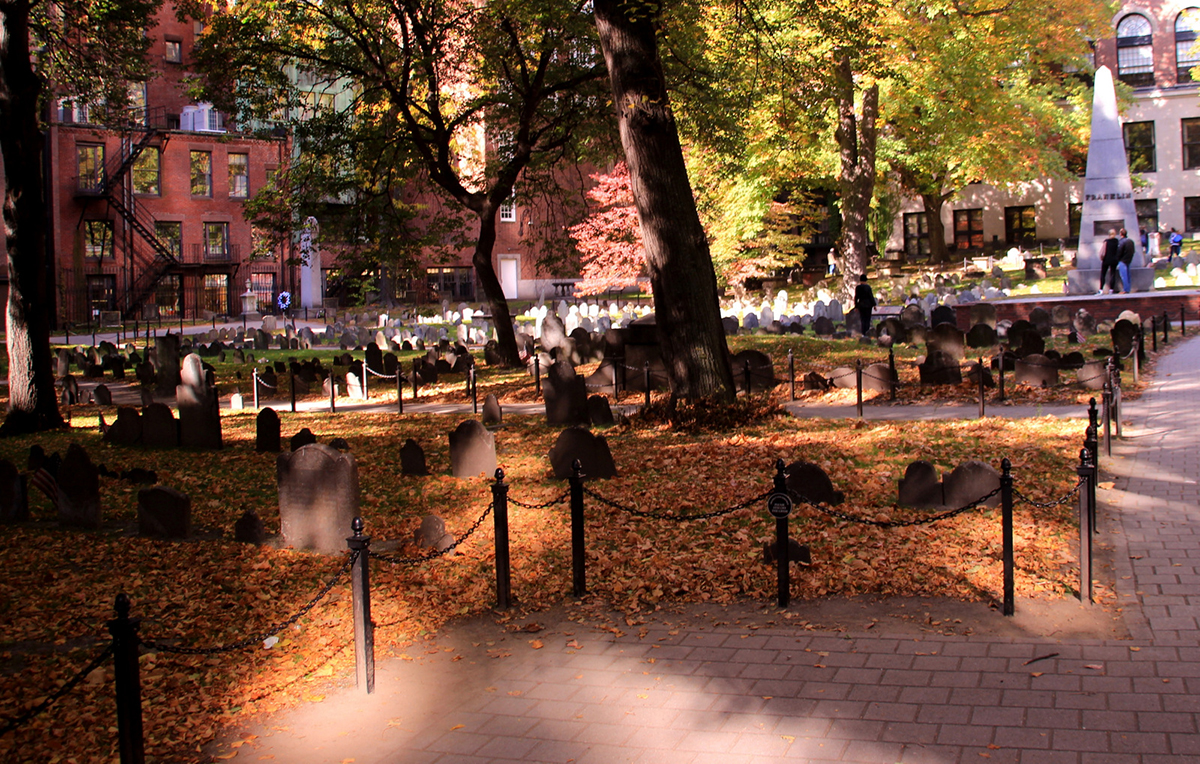
Photo by Bill Illot on Flickr/Creative Commons
DOWNTOWN
Granary Burying Ground
To help prevent the overcrowding of nearby King’s Chapel Burying Ground, a graveyard was established just down the street in 1660. Granary Burying Ground, named for a former grain storage building that once stood at the spot of Park Street Church, holds an estimated 5,000 people. Its most notable citizens include Samuel Adams, John Hancock, Paul Revere, and five victims of the Boston Massacre. Walk to the center of the cemetery and you’ll find a towering obelisk—it honors the tomb of Benjamin Franklin’s mother and father.
Tremont Street, between Park and School Streets, Boston.
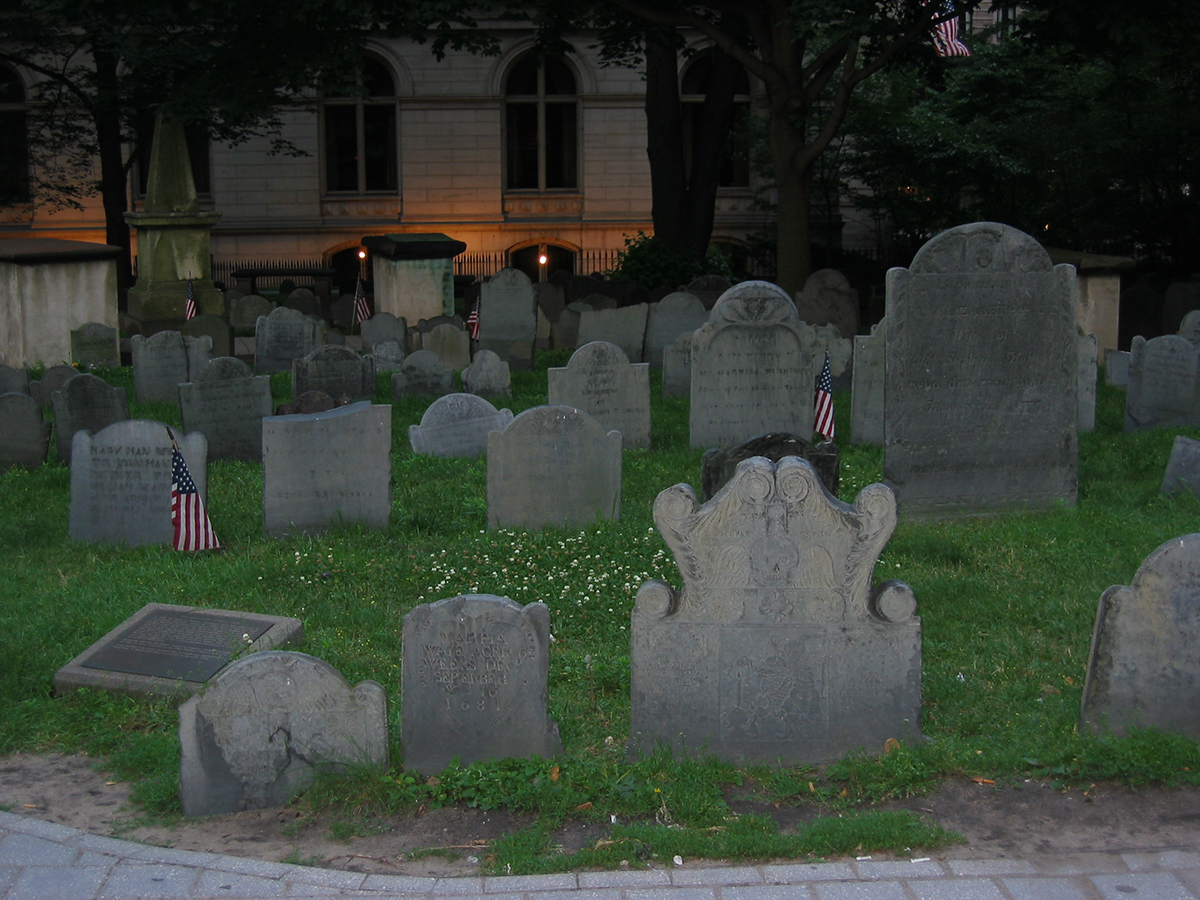
Photo by Zemistor on Flickr/Creative Commons
DOWNTOWN
King’s Chapel Burying Ground
Established in 1630, King’s Chapel Burying Ground is Boston’s oldest resting place. At the time of its creation, graves were arranged haphazardly throughout the space. Later, King’s Chapel was built on part of the land (thus the name) and in the late 1800s, the cemetery was neatened up—a cast-iron fence was built around the property, walkways were installed, and plantings were inserted. John Winthrop, the first governor of Massachusetts, lies within its gates.
13 Freedom Trail, Boston.
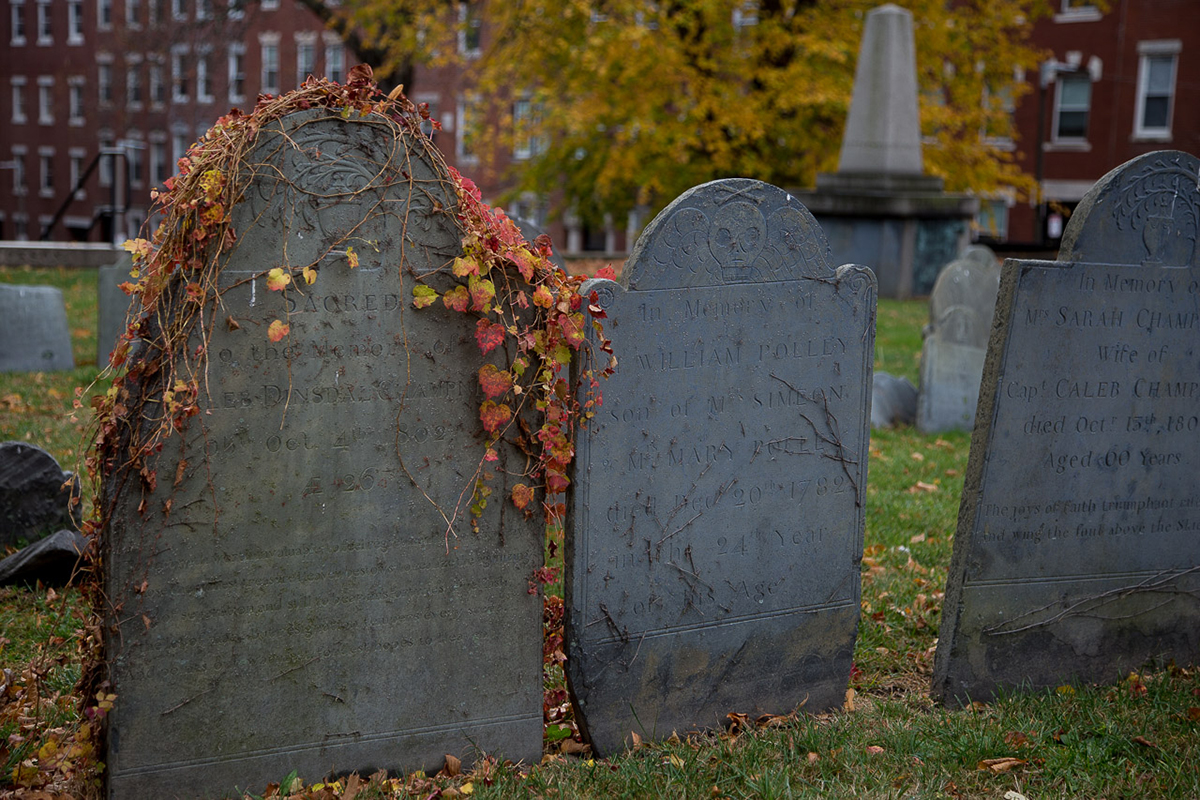
Photo by Mike Schaffner on Flickr/Creative Commons
NORTH END
Copp’s Hill Burying Ground
This waterfront cemetery was originally called North Burying Ground but was later renamed for a shoemaker and nearby resident, William Copp. Established in 1633, its proximity to the harbor made it a strategic vantage point for troops. It’s said that the British military used Copp’s Hill’s headstones for target practice. (Check out the circular markings on Captain Daniel Malcolm’s grave—they’re shaped like musketballs, no?) The cemetery is mainly a resting place for the North End’s artisans and merchants, but is also home to Boston Light‘s first lighthouse keeper, and preachers Cotton and Increase Mather.
Hull Street and Snow Hill Street, Boston.
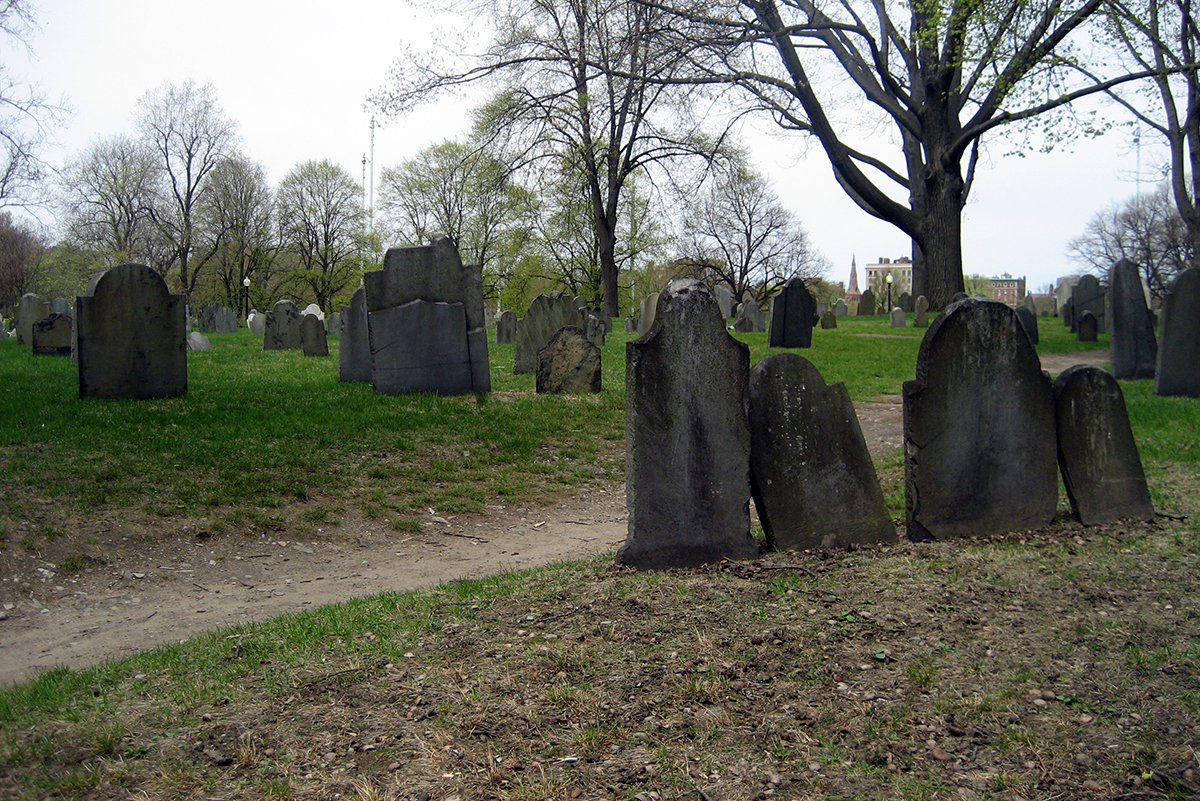
Photo by Wally Gobetz on Flickr/Creative Commons
DOWNTOWN
Central Burying Ground
After King’s Chapel, Granary, and Copp’s Hill Burying Grounds all became too crowded, Bostonians resorted to Central Burying Ground. At the base of the Boston Common, the cemetery was actually considered the least desirable place to be buried. At the time, it was thought to be far from Boston’s central marketplace (yet, the name “Central Burying Ground” stuck). It houses notables like painter Gilbert Stuart and participants in the Battle of Bunker Hill and the Boston Tea Party.
Boylston Street, between Charles Street and Tremont Street, Boston.
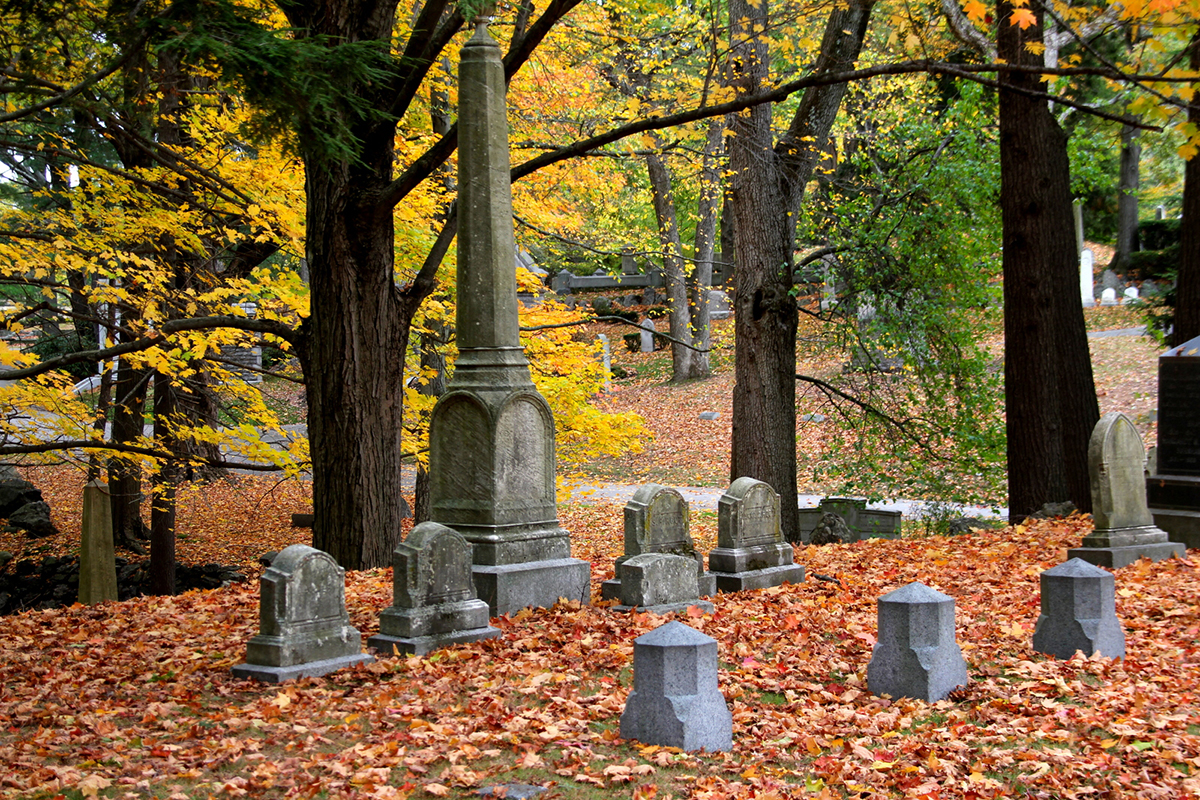
Photo by Bill Illot on Flickr/Creative Commons
JAMAICA PLAIN
Forest Hills Cemetery
Some 275 sprawling acres make up Forest Hills Cemetery in Jamaica Plain. Unlike the historic burying grounds of Boston proper, this garden cemetery and arboretum was established in 1848. It’s meant to be a place of beauty for burying loved ones, and is filled with sculptures, art, and memorials. Keep an eye out for the mini village made of stone, a family dressed as trees, and the markers of Anne Sexton, e.e. cummings, Eugene O’Neill.
95 Forest Hills Avenue, Boston.


